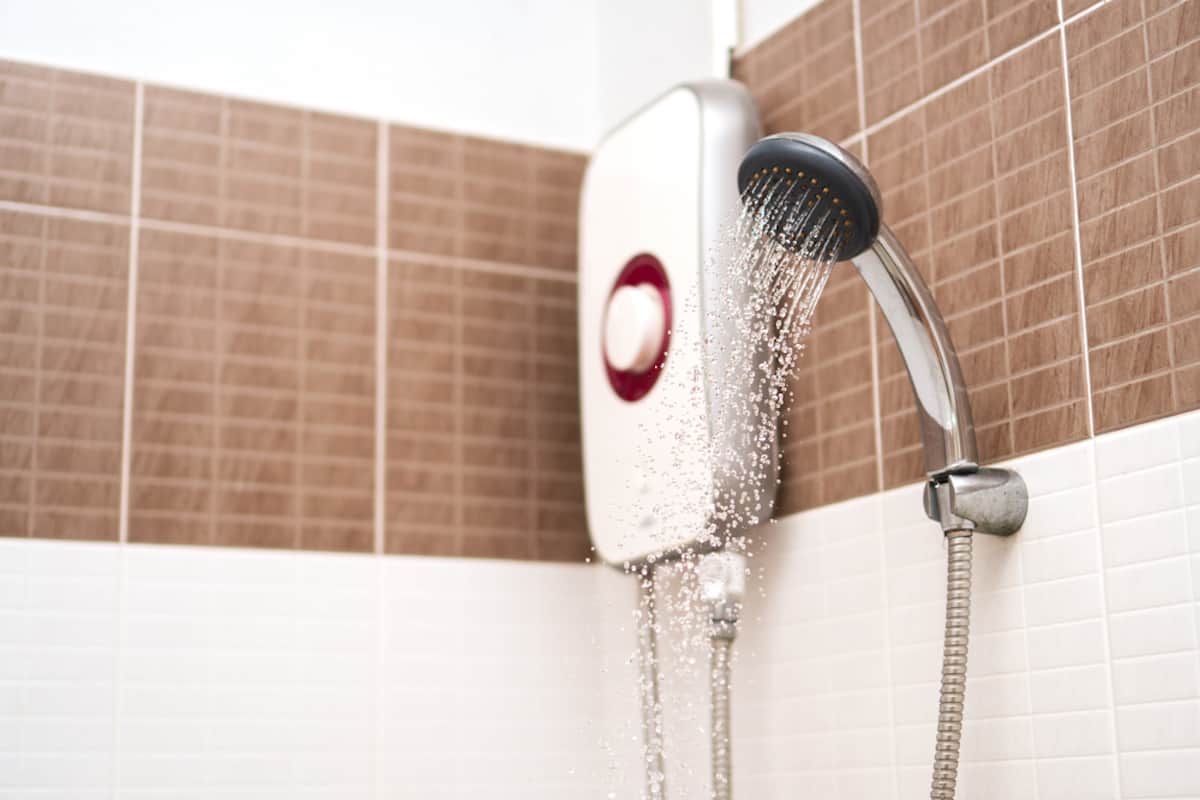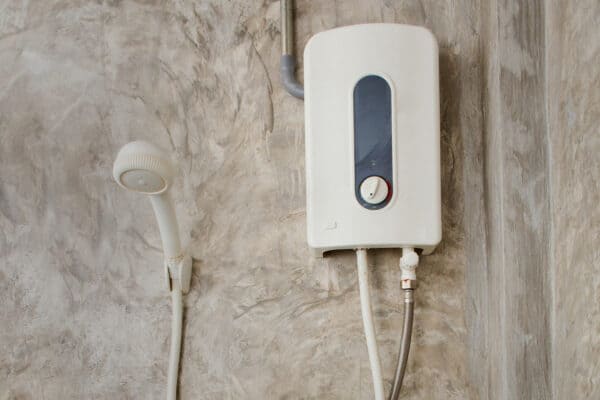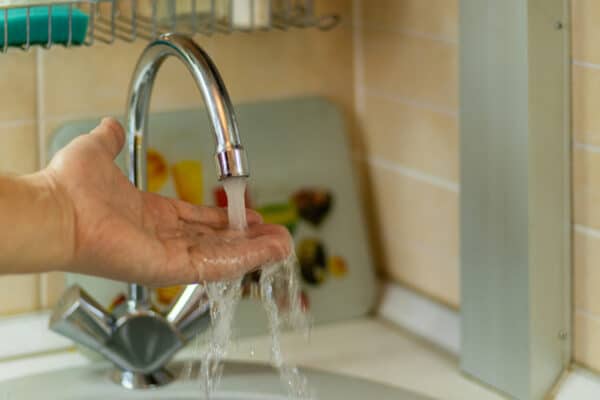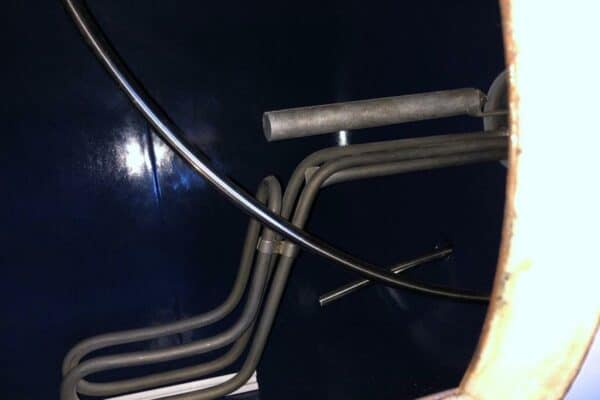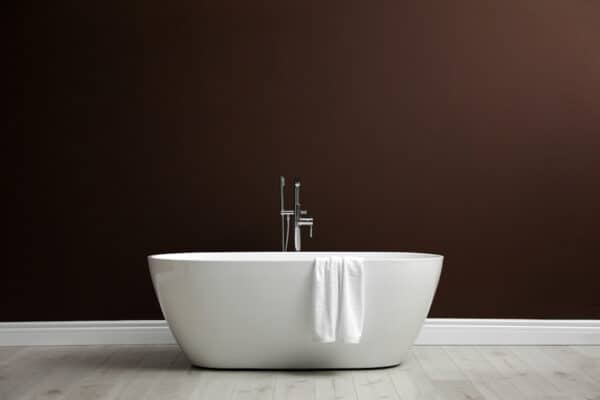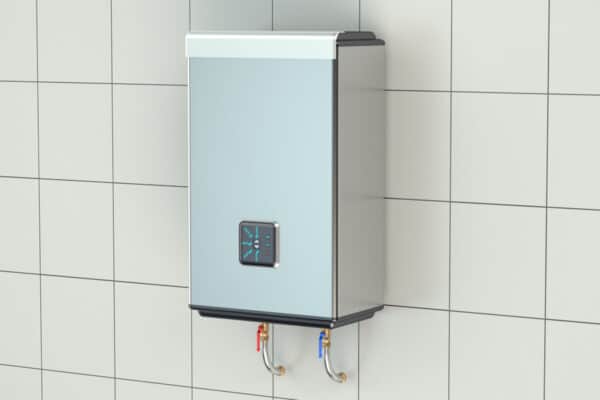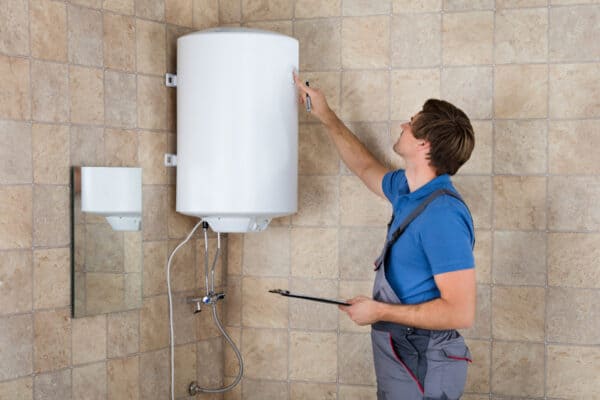How to Size Electric Tankless Water Heater?
Sizing an electric tankless water heater is tricky. There are a few factors to consider before you decide what size electric tankless water heater you need. So, how can you do it right?
To size an electric tankless water heater, minus 38°C by the cold water temperature in degree Celsius to obtain the temperature difference. Then, multiply the result by 0.667 to get the required heating capacity in kilowatt (kW) for your electric tankless water heater.
Tankless water heaters are heavily dependent on two critical factors. To ensure you select the right size of tankless water heater, it is necessary for you to understand the calculation process.
1. Determine the Faucet Water Flow Rate
Most shower faucets have a water flow rate of around 2.5 gallons per minute (GPM) or 10 litres per minute (LPM). If you are not sure of the water flow rate of your faucet, confirms it through the following steps:
- Measure the water flow rate of your shower faucet or basin faucet using a jug or any container with a scale like a water bottle. Next, get ready a timer using your mobile phone.
- Then, simultaneously start the timer and fully open the faucet for 5 seconds. Afterward, stop the timer and close the faucet.
- Observe the water volume (gallon or litre) filled in the container and the time lapsed.
- Calculate the faucet water flow rate by dividing the water volume by the time in second. Then, multiply the result by 60 to convert it into GPM or LPM.
For example, if I get a water volume of 800 ml (0.8 litres) or 0.21 gallons after 5 seconds. By dividing the water volume by the time, I get 0.16 litres per second (LPS) or 0.042 gallons per second (GPS) of water flow rate. By multiplying the result by 60, I get 9.6 litres per minute (LPM) or 2.52 gallons per second (GPM) of water flow rate.
You don’t have to be super exact in the measurement. For instance, 820 ml vs 800 ml doesn’t really matter that much. However, you can perform the measurement 3 times to get a more accurate result.
If you don’t have a jug to measure, you can use a water bottle. A typical 32 Oz water bottle is around 1 litre. But, it is hard to measure without a scale. Hence, you can fill up the 32 Oz water bottle and see how many seconds have lapsed instead of fixing the time at 5 seconds.
For example, if you managed to fill up a 32 Oz water bottle in 6 seconds, you got around 0.167 LPS of water flow rate and by multiplying the result by 60, you got around 10 LPM of water flow rate.
Sometimes, it’s hard to measure shower faucets accurately due to the shower head. So, you can remove the shower head first to get a more accurate result.
2. Identify the Incoming Cold Water Temperature
Incoming cold water temperature is the temperature of the water inside the pipeline before the tankless water heater and it is geographical-dependent.
For instance, in Malaysia, the incoming cold water temperature in most houses is around 28°C (82°F). In the United States, it is quite different across the states. Refer to the below map:

Tankless water heaters are extremely dependent on the incoming cold water temperature. The lower the incoming cold water temperature, the greater the heating capacity needed to achieve the desired hot water temperature.
However, it is not necessary to be spot on. Usually, plus or minus 1-2 degrees Fahrenheit is fine because tankless water heaters have standardized heating capacity anyway.
In addition, if you attempt to measure the incoming cold water temperature, make sure you don’t take the reading from the surface of the pipe because it can be drastically different from the actual cold water temperature inside the pipe.
3. Decide Your Desired Hot Water Temperature
Every person has their own preference when it comes to the hot water temperature for a shower. In Malaysia, we usually design the desired hot water temperature to be around 38°C (100°F).
However, many people prefer to shower at around 40°C (104°F) or even 42°C (108°F) of hot water temperature. Hence, it really varies from person to person.
Nevertheless, beware not to shoot for too high of a hot water temperature because there is a risk of scalding when you shower at more than 44°C (111°F) of hot water temperature.
4. Calculate the Heating Capacity Needed
Once you have the above information, it’s time to calculate the heating capacity you need to achieve your desired shower experience.
To calculate the heating capacity needed for your shower, use the below formula:
Q = ρVcθ
where,
Q = heating capacity, kW
ρ = density of water, 997 kg/m3
V = faucet water flow rate, m3/s
c = specific heat capacity of water, 4.182 kJ/kg°C
θ = temperature difference, °C
Also, 1 litre equals 0.001 m3 of water volume.
Assume that I have a shower faucet with 9.6 LPM of water flow rate, the incoming cold water temperature is 28°C and the desired hot water temperature is 38°C.
Using the above formula, the heating capacity needed can be calculated as follow:
Q = ρVcθ
Q = (997)(9.6 ÷ 60 x 0.001)(4.182)(38-28)
Q = 6.67 kW
Therefore, the heating capacity needed for my situation is 6.67 kW.
5. Select the Suitable Tankless Water Heater
As mentioned earlier, tankless water heaters have standardized heating capacities. Because they are resistive heaters, their power rating is equivalent to their heating capacity.
Tankless water heaters can be used in a single bathroom or shared with multiple bathrooms. Needless to say, the more bathroom a tankless water heater needs to serve, the higher the heating capacity is required.
Some of the standard heating capacity of a single bathroom 240V electric tankless water heater is as follow:
- 3.6 kW
- 4.5 kW
- 6.0 kW
- 7.5 kW
- 9.3 kW
Many electric tankless water heaters can operate in different single-phase voltages. Generally, the higher the voltage, the greater the heating capacity.
Now, since I need a heating capacity of 6.67 kW, a tankless water heater with 7.5 kW is suitable for me. If I were to go for a 6.0 kW model, I will not get the desired hot water temperature. Conversely, if I were to go for a 9.3 kW model, I will still get the desired hot water temperature but the purchase cost is higher.
6. Determine the Quantity of Tankless Water Heater
Most electric tankless water heaters are able to regulate the output power based on your setting. Hence, slightly oversizing it usually doesn’t cause any problem apart from the higher purchase cost. The operating cost will remain the same because the power consumption is directly proportional to the heating capacity.
If you want to share a tankless water heater with several bathrooms, you can either calculate based on one bathroom usage at a time or simultaneous bathroom usages.
If you calculate based on one bathroom usage at a time, compare all bathrooms and select a tankless water heater based on the bathroom with the highest heating capacity requirement.
If you calculate based on simultaneous bathroom usages (eg: two people shower at the same time), you need to add the heating capacity requirement of both bathrooms and select a bigger size tankless water heater.
Most of the time, I would recommend you use one electric tankless water heater for one bathroom because electric tankless water heaters consume very high power during operation. Not only it is risky to run high power in your house, but it is also more expensive because the cable size and the circuit breaker size have to be extra-large to accommodate for the high power usage.
For instance, if you combine to use one electric tankless water heater for 3 bathrooms, you may be looking at a 24 kW tankless water heater. All three bathrooms have a very high chance to use hot water at the same time.
Not to mention, if your incoming cold water temperature is very low, the heating capacity needed is even greater and thus, the power running through the cable is even higher.
On the flip side, if you have 3 separate relatively low-power tankless water heaters, the power surge will be lower and you may not need to upgrade any of your house electrical wiring for the water heaters.
If you have anything to add (or ask) about this topic, leave a comment down below!


